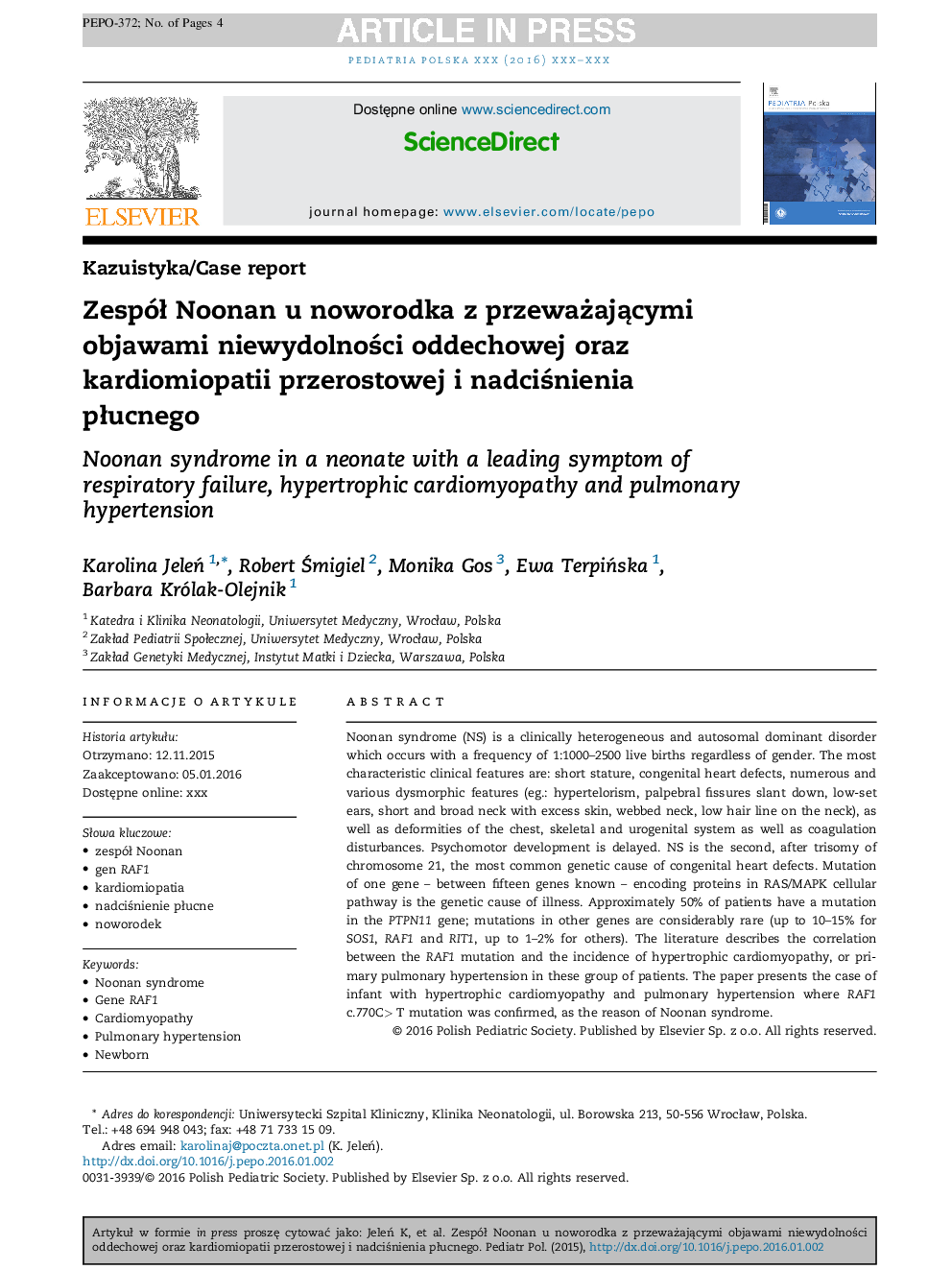| Article ID | Journal | Published Year | Pages | File Type |
|---|---|---|---|---|
| 2675279 | Pediatria Polska | 2016 | 4 Pages |
Abstract
Noonan syndrome (NS) is a clinically heterogeneous and autosomal dominant disorder which occurs with a frequency of 1:1000-2500 live births regardless of gender. The most characteristic clinical features are: short stature, congenital heart defects, numerous and various dysmorphic features (eg.: hypertelorism, palpebral fissures slant down, low-set ears, short and broad neck with excess skin, webbed neck, low hair line on the neck), as well as deformities of the chest, skeletal and urogenital system as well as coagulation disturbances. Psychomotor development is delayed. NS is the second, after trisomy of chromosome 21, the most common genetic cause of congenital heart defects. Mutation of one gene - between fifteen genes known - encoding proteins in RAS/MAPK cellular pathway is the genetic cause of illness. Approximately 50% of patients have a mutation in the PTPN11 gene; mutations in other genes are considerably rare (up to 10-15% for SOS1, RAF1 and RIT1, up to 1-2% for others). The literature describes the correlation between the RAF1 mutation and the incidence of hypertrophic cardiomyopathy, or primary pulmonary hypertension in these group of patients. The paper presents the case of infant with hypertrophic cardiomyopathy and pulmonary hypertension where RAF1 c.770C> T mutation was confirmed, as the reason of Noonan syndrome.
Related Topics
Health Sciences
Medicine and Dentistry
Dermatology
Authors
Karolina JeleÅ, Robert Åmigiel, Monika Gos, Ewa TerpiÅska, Barbara Królak-Olejnik,
